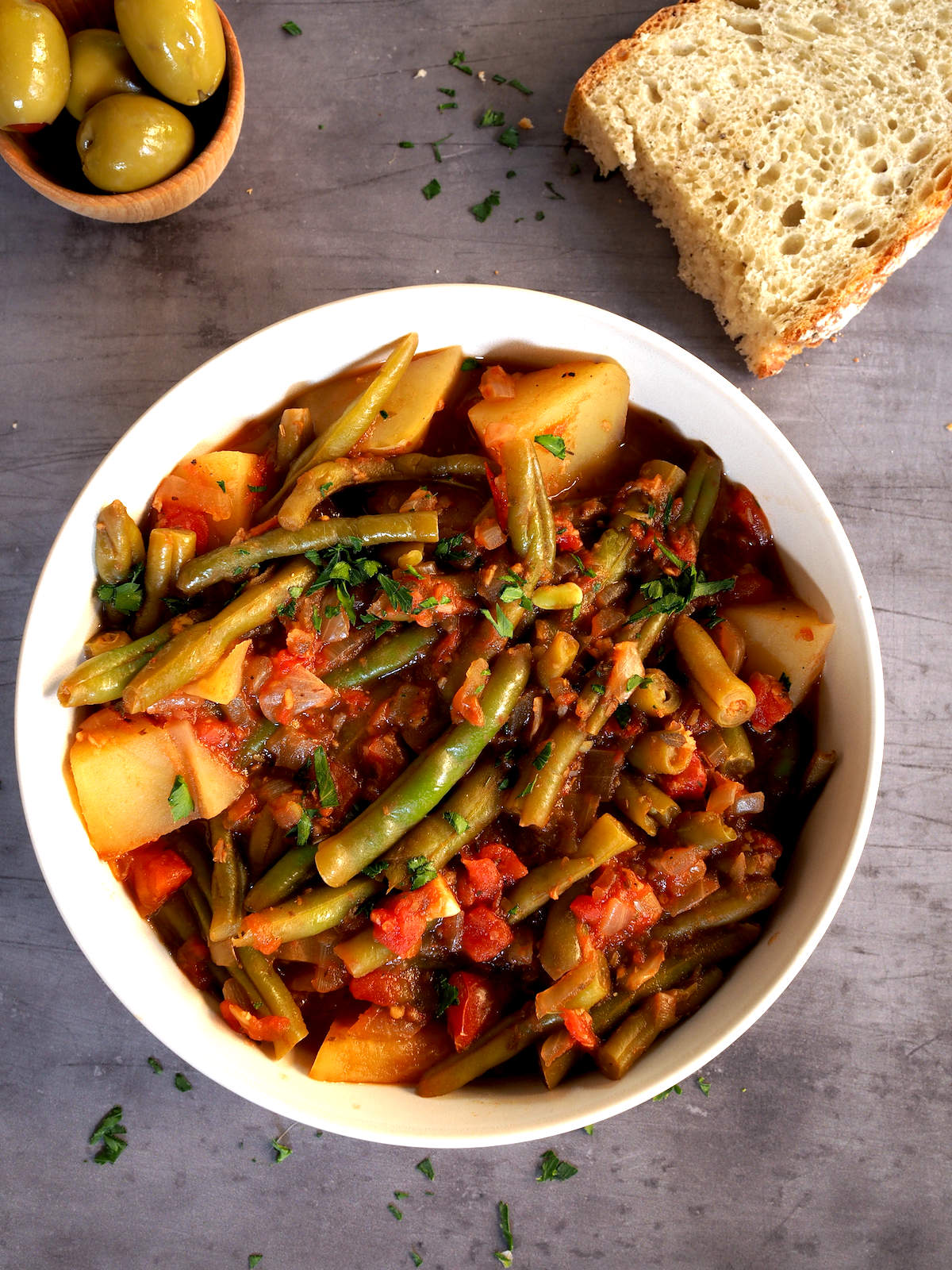Greek Green Beans: A Flavorful and Nutritious Fasolakia Recipe You Need to Try
Greek green beans, or “fasolakia,” have deep roots in Greek cuisine. Originating from the rich agricultural regions of Greece, this dish reflects the simplicity and resourcefulness of Greek cooking. Families often grow green beans in their gardens, ensuring a fresh supply throughout the growing season. Fasolakia is more than a meal; it’s a connection to tradition, often shared during family gatherings and celebrations. The use of basic, yet flavorful ingredients like tomatoes, onions, garlic, and olive oil showcases the Greek commitment to using seasonal produce and simple preparation methods to achieve rich flavors.
Nutritional Benefits
Fasolakia not only delights the palate but also provides significant health benefits. Green beans are low in calories, with about 35 calories per cup, making them an excellent choice for those watching their weight. They’re a good source of vitamins A, C, and K, as well as folate and dietary fiber. Incorporating tomatoes, onions, and garlic adds to the nutritional value. Tomatoes offer lycopene, onions provide antioxidants, and garlic enhances immune support. Olive oil, a staple in Greek cuisine, provides healthy fats that promote cardiovascular health. Combining these ingredients makes fasolakia a nutrient-dense dish that supports a balanced diet.
Essential Ingredients for Greek Green Beans
Key Spices and Herbs
Greek green beans thrive on a mix of aromatic spices and herbs. The primary herbs include dill, parsley, and mint. Dill adds a fresh, slightly tangy note, while parsley provides earthy undertones. Mint gives the dish a subtle, refreshing flavor. Essential spices feature black pepper and oregano. Black pepper offers a mild heat, and oregano imparts a robust, earthy aroma. Combining these herbs and spices enhances the natural flavors of green beans, tomatoes, and onions.
The Role of Olive Oil
Olive oil is a cornerstone of Greek cuisine, and it’s pivotal in making Greek green beans. It unifies the dish, acting as both a cooking medium and a flavor enhancer. Rich in monounsaturated fats, olive oil boosts the dish’s nutritional profile. It infuses vegetables like green beans and tomatoes with a smooth, fruity essence. Choosing extra virgin olive oil ensures maximum flavor and health benefits, aligning with the traditional practices of Greek cooking.
Cooking Techniques
Traditional Vs Modern Methods
Traditional Greek green beans rely on slow cooking methods. Slow simmering ensures the beans absorb all the flavors from tomatoes, onions, garlic, and olive oil. This method accentuates the blend of aromas and creates a tender, flavorful dish. Using a large pot on a low flame, let the beans cook for about an hour until they’re soft and well-cooked.
In contrast, modern methods incorporate faster techniques, like pressure cooking or using an Instant Pot. These appliances cut down cooking time significantly. For instance, pressure cooking Greek green beans can take 10-15 minutes, without compromising on flavor. Modern methods appeal to those who seek convenience while maintaining the traditional taste of fasolakia.
Tips for Perfect Texture
Achieving the right texture for Greek green beans is essential. First, fresh beans ensure the best texture. Pick beans that are firm and vibrant green to start. Blanching beans before simmering helps maintain their structure and brighens their color. Boil them for 2-3 minutes, then transfer to an ice bath.
When simmering, avoid over-stirring to prevent beans from breaking apart. Allow beans to cook covered on low heat to absorb flavors fully. Lastly, use enough liquid to cover the beans but not so much that they become waterlogged. Keeping these tips in mind guarantees that your Greek green beans have the perfect texture every time.
Serving and Pairing Ideas
Accompaniments
Serve Greek green beans with complementary dishes to enhance the meal experience. Pair fasolakia with roasted lamb, grilled chicken, or baked fish for a balanced and satisfying entrée. The earthy flavors of legumes like Greek lentil soup (fakes) or chickpea stew (revithia) create a wholesome combination. Consider adding crusty bread or a classic Greek salad with ripe tomatoes, cucumbers, olives, and feta cheese to round out the meal. A side of lemon potatoes or rice pilaf also provides a delightful contrast in texture and flavor.
Wine Pairings
Selecting the right wine enhances the flavors of Greek green beans. A crisp, white wine like Assyrtiko complements the dish’s herbal and tomato notes. Opt for a light red wine like Agiorgitiko if you prefer red varieties; its soft tannins and fruity profile match well with the earthy flavors. For a unique choice, try Retsina, a traditional Greek resin-infused wine, adding a pine aroma that harmonizes with the dish’s olive oil base and fresh herbs. Serving chilled rosé is also a versatile option, especially during warmer months.
Conclusion
Greek green beans, or fasolakia, offer a delightful blend of tradition and flavor that can elevate any meal. By embracing fresh, seasonal ingredients and simple cooking techniques, you’re not just preparing a dish; you’re celebrating a rich culinary heritage. Whether you stick to traditional methods or opt for modern conveniences like an Instant Pot, the essence of Greek green beans remains the same—delicious and wholesome. Pairing them with roasted lamb or a refreshing glass of chilled rosé will only enhance your dining experience. Dive into the world of fasolakia and bring a taste of Greece to your table.





